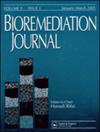In silico approach for evaluating the degradation efficiency of plastic degrading enzyme mono(2-hydroxyethyl) terephthalic acid hydrolase (MHETase) of selected bacteria
IF 1.9
4区 环境科学与生态学
Q3 ENVIRONMENTAL SCIENCES
引用次数: 0
Abstract
AbstractPlastics, which are complex polymers, have been a persistent problem due to their inherent non-biodegradability, despite their numerous applications. The huge piles of accumulated plastic are not only damaging to the environment, but also a major contributing factor to deteriorating human health. Over the years, plastic waste has been recycled and treated using conventional and advanced non-biodegradable waste treatment technologies such as incineration and landfilling, and pyrolysis and thermodegradation. However, these face their own set of challenges, and hence the use of microbial enzyme machineries to degrade plastic has recently garnered attention. We attempted to find the species that degrades mono(2-hydroxyethyl) terephthalic acid (MHET) with the highest efficiency in this study by using in silico screening of the enzyme mono(2-hydroxyethyl) terephthalic acid hydrolase (MHETase). Using the MHETase enzyme sequence of Ideonella sakaiensis as the query sequence, BLAST analysis was performed to identify the top 10 homologous sequences in other species. To identify the degrading efficiency, molecular docking using PatchDock between MHETase of different species with MHET as ligand was performed. The species Pigmentiphaga litoralis had the highest docking score of 3634, and this shows that this species degrades MHET most efficiently. The interaction studies showed that this docked molecule has 7 hydrophobic interactions and 1 hydrogen bonds. In the recent years, use of bioinformatics tools is unprecedented, growing fast and it became one of the important component in any biological research activity.Keywords: Computational approachIdeonella sakaiensisMHETasemolecular dockingmono(2-hydroxyethyl) terephthalic acidPigmentiphaga litoralisplastics degradation AcknowledgmentsWe like to thank GGS Indraprastha University, New Delhi for all the laboratory space and encouragement.Authors’ contributionsRSP designed the research project. RSP, KK and TW performed computational work, data analysis and paper preparation. Both the authors have read and agreed to publish the version of the manuscript.Disclosure statementThe authors declare that there are no conflicts of interest.Additional informationFundingThe present research received no specific grant from any funding agency.用硅片法评价选定细菌对塑料降解酶- 2-羟乙基对苯二甲酸水解酶(MHETase)的降解效率
摘要塑料是一种复杂的聚合物,尽管有许多应用,但由于其固有的不可生物降解性,一直是一个长期存在的问题。堆积如山的塑料不仅破坏环境,也是导致人类健康恶化的一个主要因素。多年来,塑料垃圾一直采用焚烧和填埋、热解和热降解等传统和先进的非生物降解废物处理技术进行回收和处理。然而,这些都面临着自己的一系列挑战,因此使用微生物酶机器来降解塑料最近引起了人们的关注。在本研究中,我们试图通过对单(2-羟乙基)对苯二甲酸水解酶(MHETase)的硅筛选,找到降解单(2-羟乙基)对苯二甲酸水解酶(MHETase)效率最高的物种。以酒井Ideonella sakaiensis的MHETase酶序列作为查询序列,进行BLAST分析,在其他物种中鉴定出前10位的同源序列。为了确定MHETase的降解效率,以不同种类的MHETase为配体,利用PatchDock对MHETase进行了分子对接。Pigmentiphaga litoralis的对接得分最高,为3634,说明该物种对MHET的降解效率最高。相互作用研究表明,该对接分子具有7个疏水相互作用和1个氢键。近年来,生物信息学工具的使用前所未有,发展迅速,成为任何生物研究活动的重要组成部分之一。关键词:计算方法;线虫;分子对接;单(2-羟乙基)对苯二甲酸;色素;srsp设计了这个研究项目。RSP, KK和TW进行计算工作,数据分析和论文准备。两位作者都已经阅读并同意出版手稿的版本。声明作者声明不存在利益冲突。本研究没有得到任何资助机构的特别资助。
本文章由计算机程序翻译,如有差异,请以英文原文为准。
求助全文
约1分钟内获得全文
求助全文
来源期刊

Bioremediation Journal
ENVIRONMENTAL SCIENCES-
CiteScore
5.30
自引率
0.00%
发文量
36
审稿时长
9 months
期刊介绍:
Bioremediation Journal is a peer-reviewed quarterly that publishes current, original laboratory and field research in bioremediation, the use of biological and supporting physical treatments to treat contaminated soil and groundwater. The journal rapidly disseminates new information on emerging and maturing bioremediation technologies and integrates scientific research and engineering practices. The authors, editors, and readers are scientists, field engineers, site remediation managers, and regulatory experts from the academic, industrial, and government sectors worldwide.
High-quality, original articles make up the primary content. Other contributions are technical notes, short communications, and occasional invited review articles.
 求助内容:
求助内容: 应助结果提醒方式:
应助结果提醒方式:


